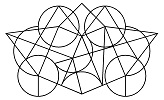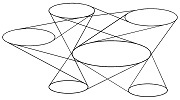 |
 |
 |
 |
 |
 |
| HOME |
The No-Till Fraud
Intro No till was a hypothetical concept which farmers had no use for, but now it is needed for promoting herbicide based GMOs. By spraying to get rid of weeds instead of tilling, farmers spend much less time in the field and farm more acres. So agriculture universities are now orienting their research around no-till. No-till is a type of farming which rose to the surface about like the carbon dioxide fraud. It's a charlatan's paradise—easier to lie about than climate change, because agriculture has infinite variables influenced by humans. So charlatans promote no-till. The definition of no-till is that no machinery touches the ground except the planter. You plant right into the stubble from the year before. The fake benefit is supposed to be a reduction in erosion, and infinite trivial comparisons always show something better about no-till, except there is no objective way to define better. Better is in the eye of the beholder, and nowhere more so than no-till. Claims of carbon sequestration through no-till are shown to be false through testing, and the whole concept is absurd. If carbon is not escaping the soil, it must be accumulating. How much is supposed to accumulate and for how long? It normally doesn't; and it shouldn't. The Erosion Fraud When you search no-till on Google, most of the articles are on problems that need to be overcome with no-till. One of the problems is that water erosion creates gullies with no-till, because the ground is not "smoothed" each year. Planting grassed waterways is one of the answers, except small gullies tend to permeate a field, while small gullies eventually become large gullies. No-till promotes erosion by not mixing the surface. Soil apart from organic matter erodes more than soil mixed with organic matter. Decaying organic matter improves soil texture, while nondecayed organic matter does not. Surely, research has settled this matter. No, the claim that no-till reduces erosion is rattled off the top of someone's head apart from research. Erosion is not easy to research beyond obvious extremes. And the whole problem with researching agriculture is that there are no clear references to compare to. Researchers in agriculture, particularly with no-till, compare to something which gives them the result that they want. There are no stable references or "controls" as laboratory scientists use for making comparisons. No-till is compared to black ground, as if molderboard plowing were the alternative. Plowing turns the ground over exposing microbes and organic matter to the sun and wind, which sterilizes the ground and leaves a dry powder on top to blow around. Compared to Incompetence. The promoters of no-till list the supposed benefits in comparison to bad alternatives, which are the worst case scenarios which should never exist. Compared to best practices, no-till is a ground killer. It's like putting training wheels on a kiddy bicycle. If a kid can't keep a bicycle upright, then training wheels might be an improvement. But should everyone use them? No-till would only be an improvement if everything were done the worst way possible. Agriculture has so many variables that there could be unusual conditions where no-till would be an improvement over other practices. But if so, it would only apply to an extremely small set of conditions. For all normal conditions, no-till is bad for the ground and bad for farmers. If for example, there is a steep slope, such as a ditch bank, where very little growth is occurring, you might not want to disturb what is there. But those conditions do not apply to agriculture. Compared to Tillage No-till is compared in a generalized way to tillage, as if tilling the ground were the ruination of agriculture. Tilling the ground is the most important thing farmers can do. Proper tillage does not leave the surface black, as the no-tillers claim. The best, and usual, way to till the ground now days is to sink chisels or sweeps in a good distance to loosen up the soil without burying the stubble. The stubble needs to be knocked down and near the surface, with some buried and some on top. If the stubble is real heavy, like high yielding corn, it needs to be chopped and partially buried with something like a disc. But still, deep cultivation is extremely valuable in opening up the ground. Deep cultivation does some very critical things. It allows the roots to go down easier, which is particularly critical with heavy soils, where roots will sit near the surface otherwise. To use no-till on heavy soils will totally destroy a crop by preventing roots from going down through the hard ground. Even shallow cultivation damages the crop in hard ground due to inability of roots to penetrate. Yet no-till is promoted for all types of soil as if there were some universal and invariable benefit. Another important result of deep cultivation is to allow oxygen and moisture to penetrate. Oxygen is needed for decay. If refuse is buried over sealed ground, it will sit for years or decades without decaying. The refuse will harbor weed seeds with it, and they will keep germinating and coming up for many years. Crazies assume it is good to have refuse on the surface of the ground. Farmers used to do everything possible to get refuse to decay. Now they let quacks tell them there is something good about undecayed refuse, perhaps saving the polar bears by reducing CO2 in the air. Undecayable refuse interferes with every element of agriculture, and there is nothing good about it. It does not stop erosion. Erosion occurs under refuse and around it. Only decaying organic matter integrates into the ground suitably for reducing erosion. Tillage minimizes erosion by loosening up hard ground and breaking up a crust on the surface. Loose ground absorbs more and slows run-off. A hard surface speeds up run-off and promotes erosion. Of course, nature reduces erosion with a heavy growth of natural vegetation. Without native vegetation, the softer the surface, the less the erosion. Farmers with heavy refuse, as in the corn belt, who practice no-till have accumulations of undecayed refuse which is destroying their ground and their ability to farm it. Yet they allow charlatans to tell them there is something good about it. It's like blood letting. It is said that George Washington was killed by blood letting. People have a tendency to let frauds tell them things which don't look right, even when they can see a lot wrong about it. With herbicide based GMOs, no-till must be promoted, because the only advantage is less cultivation. Otherwise, cultivation is the primary method of getting rid of weeds. Cultivation will kill all weeds, while herbicide only kills some of them, and not even those when resistance develops.
|
||||||||||||||